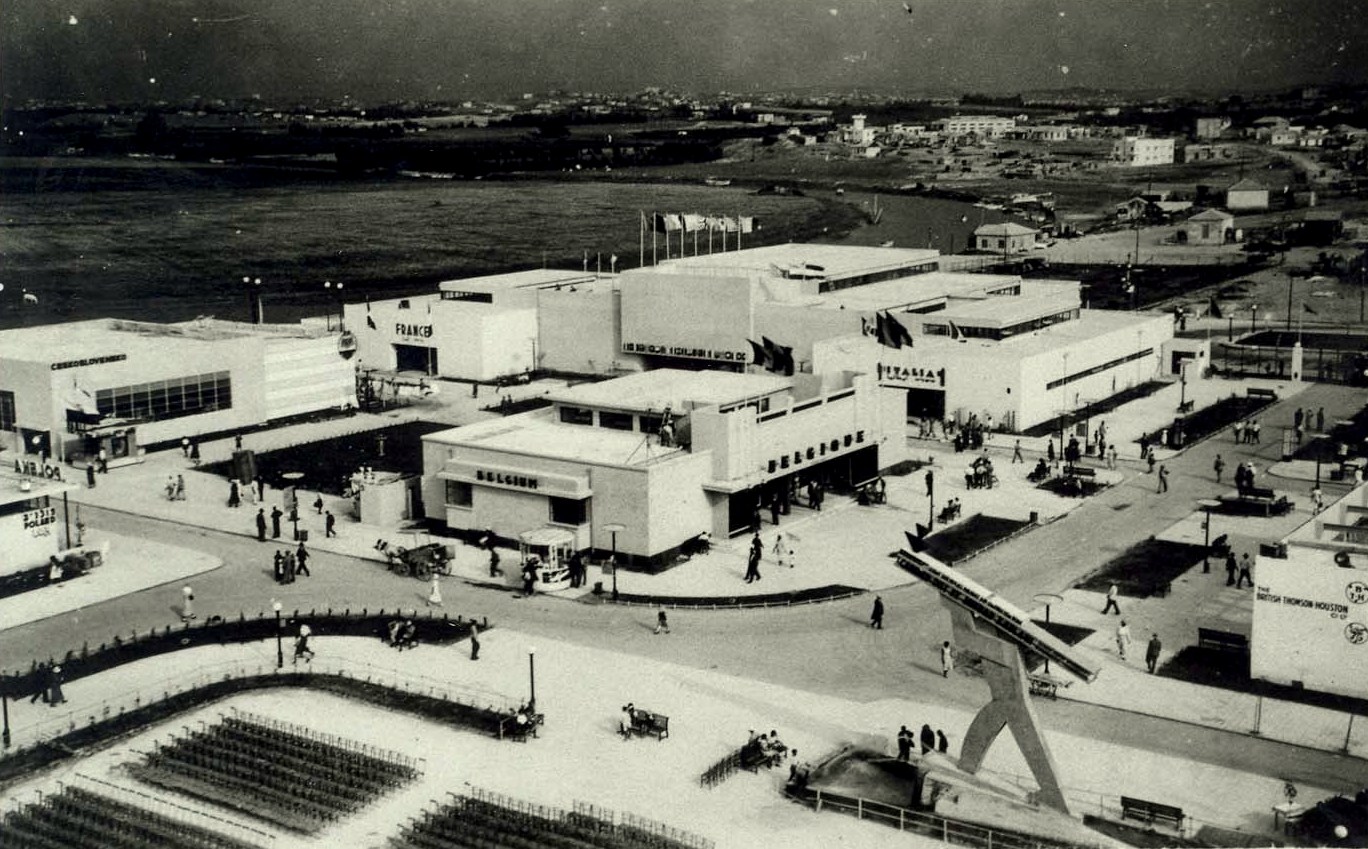|
Aryeh Elhanani
Arieh El-Hanani, born SapozhnikovArie El Hanani Israel Museum website. Retrieved 3 November 2020. (1898–1985) was an Israel Prize winner in the field of architecture for his "contribution to shaping Israeli culture." His Russian and Hebrew names have also been transliterated and spelled as Arie or Aryeh, Sapoznikov, Elhanani, etc. 
Early life in Russia El-Hanani was born in 1898 in Poltava, Russian Empire (today capital of the Poltava Oblast in central Ukraine), to as one of the five children of Elhanan (Afanasi) Sapozhnikov and Chava Liva Sapozhnikov(a). His ...[...More Info...] [...Related Items...] OR: [Wikipedia] [Google] [Baidu] |
Israel Prize
The Israel Prize ( he, פרס ישראל; ''pras israél'') is an award bestowed by the State of Israel, and regarded as the state's highest cultural honor. History The Israel Prize is awarded annually, on Israeli Independence Day, in a state ceremony in Jerusalem, in the presence of the President, the Prime Minister, the Speaker of the Knesset (Israel's legislature), and the Supreme Court President. The prize was established in 1953 at the initiative of the Minister of Education Ben-Zion Dinor, who himself went on to win the prize in 1958 and 1973. Awarding the prize The prize is awarded in the following four areas, with the precise subfields changing from year to year in a cycle of 4 to 7 years, except for the last area, which is awarded annually: * the humanities, social sciences, and Jewish studies * life and exact sciences * culture, arts, communication and sports * lifetime achievement and exceptional contribution to the nation (since 1972) The recipients of the prize are ... [...More Info...] [...Related Items...] OR: [Wikipedia] [Google] [Baidu] |
Isaac Leib Peretz
Isaac Leib Peretz ( pl, Icchok Lejbusz Perec, yi, יצחק־לייבוש פרץ) (May 18, 1852 – April 3, 1915), also sometimes written Yitskhok Leybush Peretz was a Polish Jewish writer and playwright writing in Yiddish. Payson R. Stevens, Charles M. Levine, and Sol Steinmetz count him with Mendele Mokher Seforim and Sholem Aleichem as one of the three great classical Yiddish writers. Sol Liptzin wrote: "Yitzkhok Leibush Peretz was the great awakener of Yiddish-speaking Jewry and Sholom Aleichem its comforter.... Peretz aroused in his readers the will for self-emancipation, the will for resistance against the many humiliations to which they were being subjected."Liptzin, Sol (1985). A History of Yiddish Literature'. Middle Village, NY: Jonathan David Publishers. p. 56. Peretz rejected cultural universalism, seeing the world as composed of different nations, each with its own character. In Liptzin's account, " ery people is seen by him to be a chosen people, chosen by its pecul ... [...More Info...] [...Related Items...] OR: [Wikipedia] [Google] [Baidu] |
Weizmann Institute Of Science
The Weizmann Institute of Science ( he, מכון ויצמן למדע ''Machon Vaitzman LeMada'') is a public research university in Rehovot, Israel, established in 1934, 14 years before the State of Israel. It differs from other Israeli universities in that it offers only postgraduate degrees in the natural and exact sciences. It is a multidisciplinary research center, with around 3,800 scientists, postdoctoral fellows, Ph.D. and M.Sc. students, and scientific, technical, and administrative staff working at the institute. As of 2019, six Nobel laureates and three Turing Award winners have been associated with the Weizmann Institute of Science. History Founded in 1934 by Chaim Weizmann and his first team, among them Benjamin M. Bloch, as the Daniel Sieff Research Institute. Weizmann had offered the post of director to Nobel Prize laureate Fritz Haber, but took over the directorship himself after Haber's death en route to Palestine. Before he became President of the State o ... [...More Info...] [...Related Items...] OR: [Wikipedia] [Google] [Baidu] |
Kfar Saba
Kfar Saba ( he, כְּפַר סָבָא), officially Kefar Sava, is a city in the Sharon region, of the Central District of Israel. In 2019 it had a population of 110,456, making it the 16th-largest city in Israel. The population of Kfar Saba is nearly entirely Jewish. History of modern Kfar Saba The Palestinian village of Kafr Saba was considered to be ancient Capharsaba – an important settlement during the Second Temple period in ancient Judea,The Origin of the Name Capharsaba Kfar Sava Municipal Council is mentioned for the first time in the writings of , in his account of the attempt of |
Arieh Sharon
Arieh Sharon ( he, אריה שרון; May 28, 1900 – July 24, 1984) was an Israeli architect and winner of the Israel Prize for Architecture in 1962. Sharon was a critical contributor to the early architecture in Israel and the leader of the first master plan of the young state, reporting to then Prime Minister, David Ben-Gurion. Sharon studied at the Bauhaus in Dessau under Walter Gropius and Hannes Meyer and on his return to Israel (then Palestine) in 1931, started building in the International Style, better known locally as the Bauhaus style of Tel Aviv. Sharon built private houses, cinemas and in 1937 his first hospital, a field in which he specialized in his later career, planning and constructing many of the country's largest medical centers. During the 1947–1949 Palestine war in 1948, Sharon was appointed head of the Government Planning Department, whose main challenge was where to settle the waves of immigrants who were arriving in the country, and in 1954 return ... [...More Info...] [...Related Items...] OR: [Wikipedia] [Google] [Baidu] |
Holocaust
The Holocaust, also known as the Shoah, was the genocide of European Jews during World War II. Between 1941 and 1945, Nazi Germany and its collaborators systematically murdered some six million Jews across German-occupied Europe; around two-thirds of Europe's Jewish population. The murders were carried out in pogroms and mass shootings; by a policy of extermination through labor in concentration camps; and in gas chambers and gas vans in German extermination camps, chiefly Auschwitz-Birkenau, Bełżec, Chełmno, Majdanek, Sobibór, and Treblinka in occupied Poland. Germany implemented the persecution in stages. Following Adolf Hitler's appointment as chancellor on 30 January 1933, the regime built a network of concentration camps in Germany for political opponents and those deemed "undesirable", starting with Dachau on 22 March 1933. After the passing of the Enabling Act on 24 March, which gave Hitler dictatorial plenary powers, the government began isolating Je ... [...More Info...] [...Related Items...] OR: [Wikipedia] [Google] [Baidu] |
Yad Vashem
Yad Vashem ( he, יָד וַשֵׁם; literally, "a memorial and a name") is Israel's official memorial to the victims of the Holocaust. It is dedicated to preserving the memory of the Jews who were murdered; honoring Jews who fought against their Nazi oppressors and Gentiles who selflessly aided Jews in need; and researching the phenomenon of the Holocaust in particular and genocide in general, with the aim of avoiding such events in the future. Established in 1953, Yad Vashem is located on the western slope of Mount Herzl, also known as the Mount of Remembrance, a height in western Jerusalem, above sea level and adjacent to the Jerusalem Forest. The memorial consists of a complex containing two types of facilities: some dedicated to the scientific study of the Holocaust and genocide in general, and memorials and museums catering to the needs of the larger public. Among the former there are a research institute with archives, a library, a publishing house, and an educational ... [...More Info...] [...Related Items...] OR: [Wikipedia] [Google] [Baidu] |
Yad Vashem BW 3
A yad (, literally "hand"; ''hant'', "hand") is a Jewish ritual pointer, popularly known as a Torah pointer, used by the reader to follow the text during the Torah reading from the parchment Torah scrolls. It is often shaped like a long rod, capped by a small hand with its index finger pointing from it. Rationale Beyond its practical usage in pointing out letters, the yad ensures that the parchment is not touched during the reading. There are several reasons for this: handling the parchment renders one ritually impure and the often-fragile parchment is easily damaged. Moreover, the vellum parchment does not absorb ink so touching the scroll with fingers will damage the lettering. While not required when chanting from the Torah, it is used frequently and is considered a ("embellishment of the commandment") of reading the Torah. Manufacture A ''yad'' can be made of any number of materials, though silver is common, especially used in crowning the yad. In some cases, a ''y ... [...More Info...] [...Related Items...] OR: [Wikipedia] [Google] [Baidu] |
Tel Aviv Convention Center
Expo Tel Aviv (formerly the Israel Trade Fairs and Convention Center ( he, מרכז הירידים והקונגרסים בישראל) and later the Tel Aviv Convention Center ( he, מרכז הירידים - תל אביב), commonly referred to as Ganei HaTaarucha ( he, גני התערוכה, ''lit.'' "Exhibition Gardens") or the Tel Aviv Fairgrounds, is a fairground complex on Rokach Boulevard in northern Tel Aviv, Israel used as a venue for concerts, exhibitions, trade fairs and conferences. Established in 1932 as Yerid HaMizrach at the site of the Levant Fair, near the Tel Aviv Port, the fairgrounds moved to their present location at 101 Rokach Boulevard (near the Yarkon Park and Tel Aviv University) in 1959. The site is directly accessible from the Ayalon Highway, Tel Aviv’s main transportation artery, as well as from the Tel Aviv University railway station. Expo Tel Aviv hosts up to 2.5 million visitors and between 45 and 60 major events annually. The fairground has ten ... [...More Info...] [...Related Items...] OR: [Wikipedia] [Google] [Baidu] |
Hebrew Labor
"Hebrew labor" ( he, עבודה עברית, ''Avoda Ivrit'') and "conquest of labor" (''Kibbush haAvoda'') are two related terms and concepts. One of them refers to the ideal adopted by some Jews in Ottoman and Mandate Palestine during the late 19th and early 20th centuries and later embraced by Zionism to favour hiring Jewish rather than non-Jewish workers. Another one is the slogan for the Jews to embrace productive (industrial and agricultural) labor rather than being engaged only in trades and professions."Kibbush Haavoda (conquest of labor)" at ''Zionism and Israel''"Avoda Ivrit (Jewish labor)" at ''Zionism and Israel'' Background End of the Ottoman period During the Second Aliyah period many Jewish immigrants to Palestine sought year-round jobs on the agricultural tracts and plantations of their co-religionists who had arrived during the First Aliyah. Rather than hire their fellow Jews, the immigrants of the First Aliyah were initially inclined to hire local Arabs who provid ... [...More Info...] [...Related Items...] OR: [Wikipedia] [Google] [Baidu] |
Russian Constructivism
Constructivism is an early twentieth-century art movement founded in 1915 by Vladimir Tatlin and Alexander Rodchenko. Abstract and austere, constructivist art aimed to reflect modern industrial society and urban space. The movement rejected decorative stylization in favor of the industrial assemblage of materials. Constructivists were in favour of art for propaganda and social purposes, and were associated with Soviet socialism, the Bolsheviks and the Russian avant-garde. Constructivist architecture and art had a great effect on modern art movements of the 20th century, influencing major trends such as the Bauhaus and De Stijl movements. Its influence was widespread, with major effects upon architecture, sculpture, graphic design, industrial design, theatre, film, dance, fashion and, to some extent, music. Beginnings Constructivism was a post-World War I development of Russian Futurism, and particularly of the 'counter reliefs' of Vladimir Tatlin, which had been exhibited in ... [...More Info...] [...Related Items...] OR: [Wikipedia] [Google] [Baidu] |







